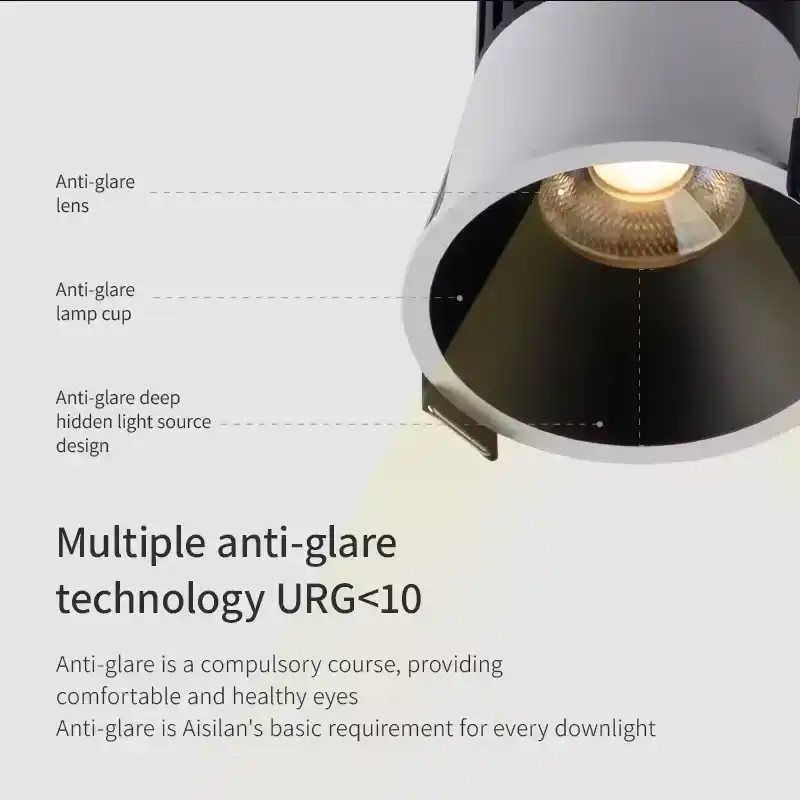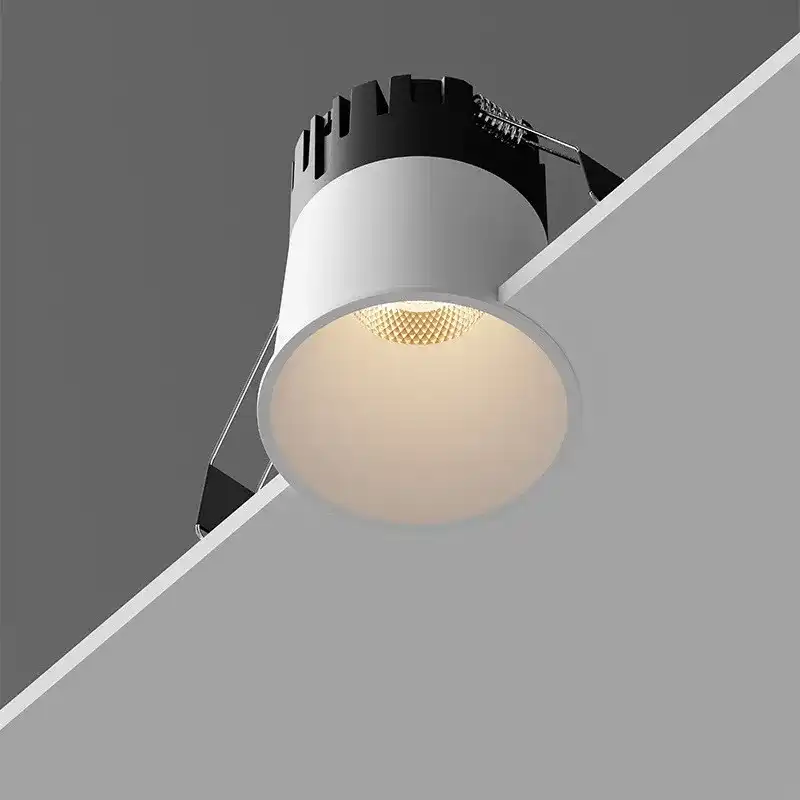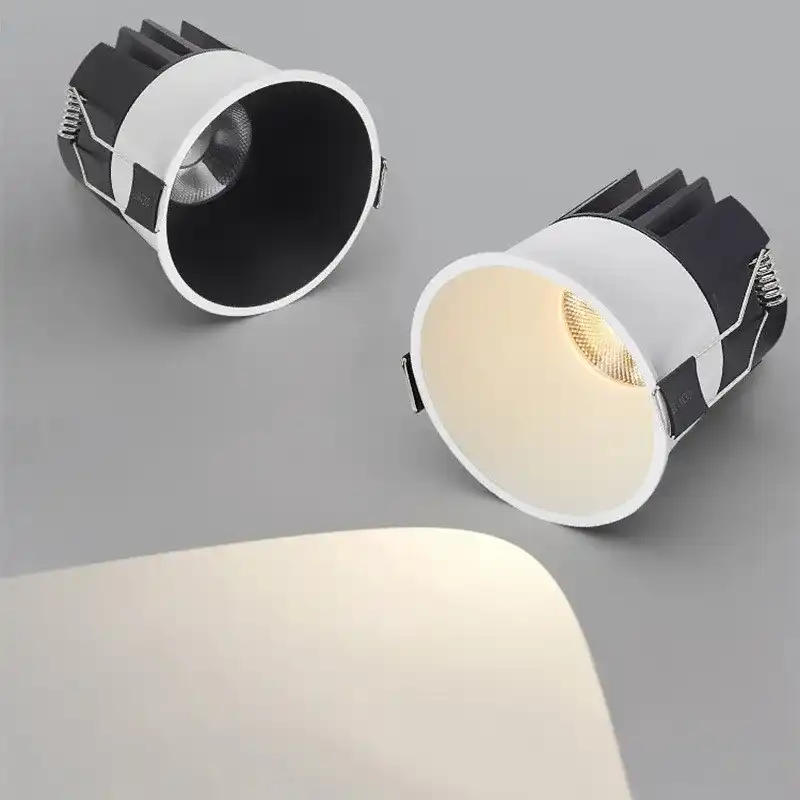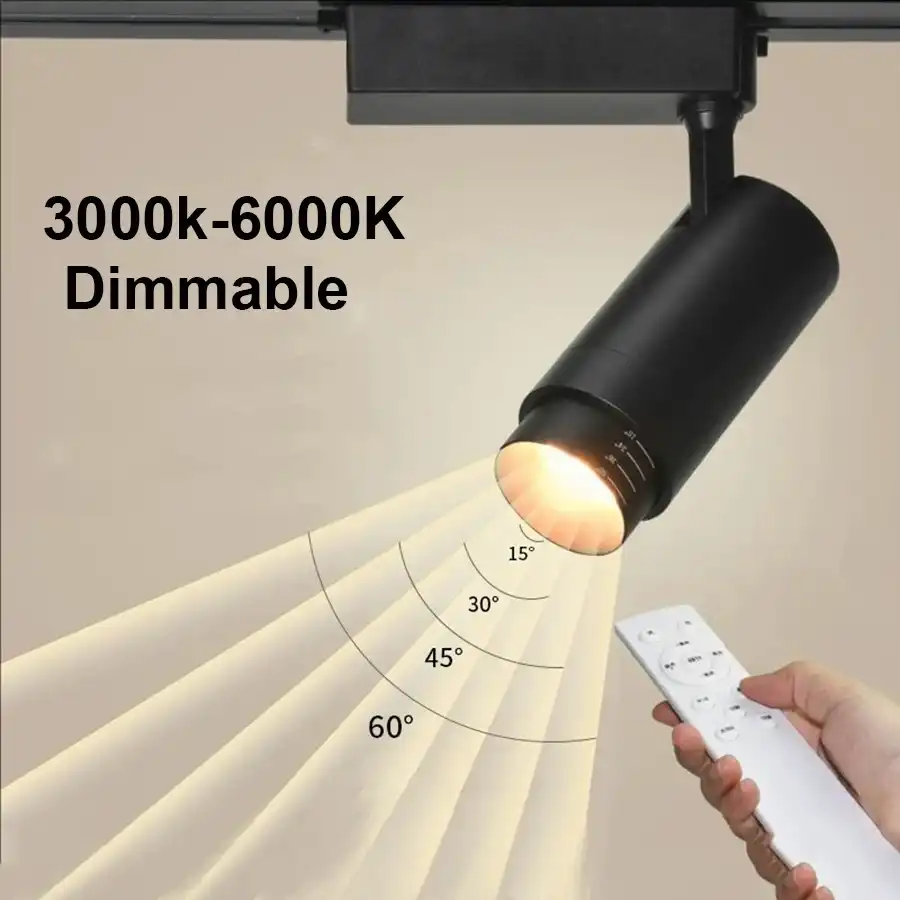The Evolution of Recessed Downlights: From Concept to Modern Illumination
The Birth of Recessed Lighting
Recessed downlights have come a long way since their inception. The concept of recessed lighting dates back to the early 20th century when architects and designers began experimenting with ways to integrate lighting seamlessly into building structures. The idea was to create a more streamlined and less obtrusive lighting solution that could enhance the overall aesthetics of a space.
In the 1940s and 1950s, recessed lighting gained popularity in commercial and residential applications. Early designs were often bulky and less efficient compared to today's standards, but they laid the groundwork for the sophisticated recessed downlights we use today. These early fixtures typically used incandescent bulbs, which were the primary light source available at the time.
Technological Advancements in Recessed Lighting
As technology progressed, so did the design and functionality of recessed downlights. The introduction of halogen bulbs in the 1960s marked a significant improvement in lighting quality and efficiency. Halogen lamps offered brighter, whiter light and longer lifespans compared to traditional incandescent bulbs, making them a popular choice for recessed fixtures.
The late 20th and early 21st centuries saw the rise of compact fluorescent lamps (CFLs) in recessed lighting applications. CFLs provided even greater energy efficiency and longer lifespans, although they faced some criticism for their color quality and warm-up time. Despite these drawbacks, CFLs played a crucial role in the evolution of energy-efficient lighting solutions.
The LED Revolution in Recessed Downlights
The most recent and perhaps most significant advancement in recessed lighting technology has been the widespread adoption of LED (Light Emitting Diode) technology. LED recessed downlights have revolutionized the industry, offering unprecedented energy efficiency, longevity, and versatility in lighting design.
LED recessed downlights consume significantly less energy than their predecessors, with some models using up to 75% less energy than traditional incandescent bulbs. They also boast impressive lifespans, often lasting 25,000 hours or more, which translates to decades of use in typical residential settings. This longevity not only reduces replacement costs but also minimizes the environmental impact associated with frequent bulb changes.
Moreover, LED technology has enabled greater control over light color and intensity. Many modern LED recessed downlights offer color temperature adjustability, allowing users to customize the ambiance of their space from warm, cozy tones to cool, invigorating hues. Some advanced models even incorporate smart technology, enabling remote control and integration with home automation systems.

The Anatomy of Modern Recessed Downlights: Components and Design
Housing: The Hidden Backbone
The housing is the main body of a recessed downlight, typically hidden within the ceiling cavity. It serves as the protective enclosure for the electrical components and provides structural support for the entire fixture. Modern housings are designed with several key features:
- Insulation Compatibility: Many recessed downlights feature IC-rated (Insulation Contact) housings, which can be safely installed in direct contact with insulation. This feature is crucial for maintaining energy efficiency in insulated ceilings.
- Air-Tight Construction: To prevent air leakage and maintain the building's energy efficiency, many housings are designed to be air-tight, minimizing heat loss through the ceiling.
- Adjustable Mounting: Some housings come with adjustable mounting brackets, allowing for easy installation in various ceiling types and thicknesses.
Trim: The Visible Face
The trim is the visible portion of the recessed downlight, sitting flush with the ceiling surface. It plays both functional and aesthetic roles:
- Light Direction: Different trim styles can influence the direction and spread of light. For example, baffle trims reduce glare, while adjustable trims allow for precise aiming of the light beam.
- Aesthetic Appeal: Trims come in various finishes and styles to complement different interior designs. Options range from minimalist white trims to decorative metallic finishes.
- Moisture Resistance: For use in bathrooms or outdoor areas, some trims are designed to be moisture-resistant, preventing water damage to the fixture.
Light Source: The Heart of Illumination
In modern recessed downlights, LED modules have become the preferred light source due to their efficiency and versatility. Key aspects of LED light sources in recessed fixtures include:
- Color Temperature Options: LEDs are available in a range of color temperatures, typically from warm white (2700K-3000K) to cool white (5000K-6500K), allowing for customized lighting atmospheres.
- High Color Rendering Index (CRI): Many LED recessed downlights offer high CRI ratings (90+ in some cases), ensuring accurate color representation of objects and surfaces in the illuminated space.
- Dimming Capabilities: Advanced LED drivers enable smooth dimming, often compatible with various dimming protocols for greater control over light levels.
Thermal Management: Ensuring Longevity
Effective thermal management is crucial for the performance and lifespan of LED recessed downlights. Modern designs incorporate several heat dissipation techniques:
- Heat Sinks: Aluminum heat sinks are often integrated into the fixture design to draw heat away from the LED chips.
- Ventilation: Some fixtures include ventilation slots or channels to promote air circulation and heat dissipation.
- Thermal Protectors: Advanced models may include thermal sensors that adjust the LED output to prevent overheating in extreme conditions.

Optimizing Recessed Downlight Placement for Maximum Impact
Understanding Light Distribution Patterns
The effectiveness of recessed downlights largely depends on their placement within a space. To achieve optimal lighting, it's essential to understand the light distribution patterns of different recessed fixtures:
- Beam Angle: Recessed downlights come with various beam angles, typically ranging from narrow (15-30 degrees) to wide (50-60 degrees). Narrow beam angles create focused light ideal for accent lighting, while wider angles provide more general illumination.
- Light Spread: Consider the diameter of the light spread at the floor level. As a rule of thumb, multiply the ceiling height by 0.7 to determine the approximate diameter of the light spread for a 60-degree beam angle fixture.
- Overlapping: For even illumination, plan for some overlap between the light spreads of adjacent fixtures. This helps eliminate dark spots and creates a more uniform lighting effect.
Room-Specific Placement Strategies
Different rooms and functional areas within a space require tailored approaches to recessed downlight placement:
- Living Rooms: Use a combination of general and accent lighting. Place recessed downlights around the perimeter of the room for ambient light, and use additional fixtures to highlight artwork or architectural features.
- Kitchens: Focus on task lighting by placing recessed downlights over countertops and work areas. Consider using higher lumen output fixtures in these areas to ensure adequate illumination for food preparation.
- Bathrooms: Place fixtures on either side of the mirror to provide even facial illumination. For smaller bathrooms, a centrally placed recessed downlight can provide general illumination.
- Bedrooms: Create a layered lighting scheme with recessed downlights for ambient lighting and additional fixtures for reading or dressing areas.
Balancing Aesthetics and Functionality
While proper illumination is crucial, the visual impact of recessed downlight placement should not be overlooked:
- Symmetry: In formal spaces, maintain symmetrical placement of recessed downlights to create a balanced and orderly appearance.
- Ceiling Features: Work around ceiling features such as beams or decorative moldings. Use these elements to guide the placement of recessed fixtures for a cohesive look.
- Minimalism: In modern or minimalist interiors, consider using fewer, strategically placed recessed downlights to maintain a clean ceiling line while still providing adequate illumination.
- Layering: Combine recessed downlights with other lighting types, such as pendant lights or wall sconces, to create depth and visual interest in the space.
Considering Future Flexibility
When planning recessed downlight placement, think about potential future changes to the space:
- Furniture Arrangements: Avoid placing recessed downlights in areas where they may be blocked by future furniture placements.
- Scalability: Install additional electrical boxes or use fixtures with interchangeable trims to allow for easy upgrades or changes in lighting needs.
- Smart Integration: Consider using smart recessed downlights or compatible fixtures that can be integrated into home automation systems for greater control and flexibility.
Conclusion
Recessed lighting, with its sleek design and versatile application, has become a staple in modern interior design. From its humble beginnings to the advanced LED technology of today, recessed downlights have evolved to meet the changing needs of architects, designers, and homeowners alike. By understanding the components, placement strategies, and technological advancements of recessed lighting, you can harness its full potential to create beautifully illuminated spaces that are both functional and aesthetically pleasing.
As lighting technology continues to advance, we can expect even more innovations in recessed downlight design, energy efficiency, and smart integration. Whether you're renovating your home, designing a commercial space, or simply looking to upgrade your lighting, recessed downlights offer a timeless solution that combines form and function seamlessly. For more information about our range of LED lighting products, including state-of-the-art recessed downlights, please don't hesitate to contact us at sales@uskyled.com.



![What is Dimmable Track Lighting for Museum: Best Guide [2025]](/icms/upload/0d08cc601e7611f0b542b3ca0c0f4a83/pic/knowledgemanager-knowledgepic/e7879f32605f11f081911f363b8c1ed0/Directory/20250717 dimmable track lighting -1(1)_1752739217941.webp)

